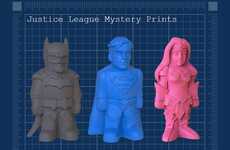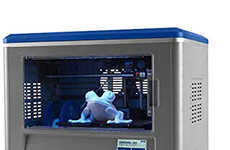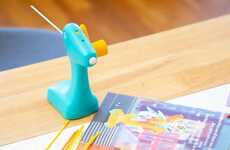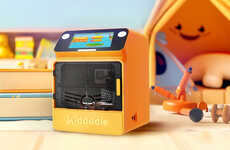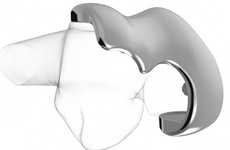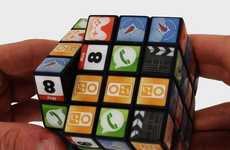
These Experiements with 3D Printed Toys Could Revolutionize Production
Laura McQuarrie — April 29, 2014 — Life-Stages
References: dl.acm.org & gizmodo
The possibilities of 3D-printing are ever expanding and now, it may even be possible to start fabricating soft sculpted 3D-printed toys, as discovered by researcher Scott E. Hudson from Carnegie Mellon University.
3D printing is able to rapidly pump out plastic toys, but making them soft and fuzzy has hardly been explored. By hacking a 3D printer, Hudson replaced the melted plastic material with a wool/wool blend yarn to craft a charming 3D-printed toy.
The process isn't like a knitting machine, since it's not flat and it is able to build layers upon layers by felting the soft fibers. The result is a tiny, flat-backed teddy that looks surprisingly home-made, which could have huge implications for the way soft toys are produced in the future.
3D printing is able to rapidly pump out plastic toys, but making them soft and fuzzy has hardly been explored. By hacking a 3D printer, Hudson replaced the melted plastic material with a wool/wool blend yarn to craft a charming 3D-printed toy.
The process isn't like a knitting machine, since it's not flat and it is able to build layers upon layers by felting the soft fibers. The result is a tiny, flat-backed teddy that looks surprisingly home-made, which could have huge implications for the way soft toys are produced in the future.
Trend Themes
1. Soft 3d-printed Toys - New concept of 3D-printing soft toys with wool blends exploring new possibilities for the future production of toys.
2. Fuzzy Additive Manufacturing - Alternative method of utilizing wool-blend yarns in 3D printing is disrupting traditional mode of production in additive manufacturing.
3. Layered Felting Technology - Innovative process of layering soft fibers for 3D-printed toys can lead to new manufacturing capabilities and a rise in felting technology.
Industry Implications
1. Toy Manufacturing - Soft 3D-printed toys using wool/wool blends could open up new possibilities for toy manufacturing, making production more efficient and unique.
2. 3D Printing - Fuzzy additive manufacturing using wool blends to replace plastic in 3D printing represents an opportunity for the industry to expand products to the soft toy market and challenge traditional manufacturing methods.
3. Textile Industry - The emergence of a new 3D printing technology aimed at felting wool/wool blends could disrupt the textile industry, providing new and cost-effective material options for product development.
3.3
Score
Popularity
Activity
Freshness

